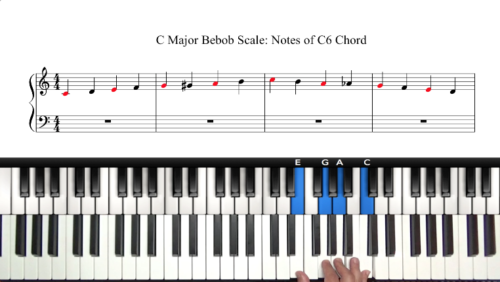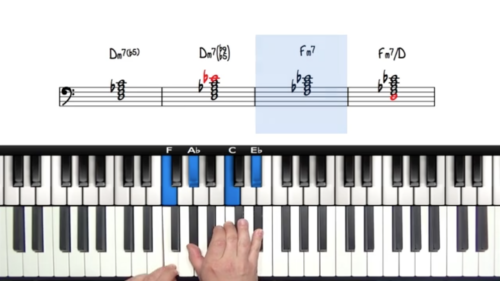“Just Friends” Part 2
Welcome to part 2 of this tutorial on the tune “Just Friends”. In part 1, we analysed the basic harmony and gave special attention to the b7ths falling to 3rds in the 25 and 251 progressions.
This really is the foundation of the harmony. Once we can visualise these important tones, we can then apply extensions and alterations to our voicings.
Solo Jazz Piano Arrangement
In this lesson we will create a full solo piano arrangement incorporating more advanced jazz theory. We have covered lots of the underlying upper structure triad theory in this course and now we will apply this theory in the context of “Just Friends”.
We will now explore some interesting colours and textures that can be accessed over dominant chords.
The Upper Structure Triad Cheat Sheet
Make sure that you print a copy of the upper structure triad cheat sheet. This is a very useful document to keep close to the piano. When you come across a dominant chord, match up the melody note to one of the chord tones listed in the UST, and you will be able to experiment with some cool altered dominant sounds.
Practice Tips
-
Watch the beginner tutorial on "Just Friends" where we outline the foundation of the harmony.
-
Once you can visualise the roots, 3rds, and 7ths, it's then time to introduce chord extensions and alterations.
-
Pay attention to the melody note, and use this as a basis to derive suitable chord voicings.
-
This is particularly true for dominant chords, once you learn and memorise the upper structure triad formulas, you will be much more in finding suitable voicings.





This is a lovely tune. Keep them coming. . .
Hello Hayden (and others, if this is of interest): a friend sent me this tune
where I discovered the piano improvisation that I just loved. It seems to me that at least some parts can be nicely adjusted to improvising in Just Friends. I especially liked how the young man plays triplets (“more notes for the same money” as someone told me), elegantly. Love the overall style, too.
May be of interest to other students. Smole
P.S. Joan Chamorro, I checked, discovers very young jazz musicians and you may find his music, in ensembles or a full jazz band, as appealing as I did.
Fantastic performance Smole…. thanks for sharing.
Wonderful talents from the young musicians.
Cheers,
Hayden
Yes, it is (and so are others of Chamorro’s work). At present, I am looking to add playing at tempo in addition to playing slowly, or rubato. Your transcript, which I am almost playing well, is the basis for this tune, of course. Thanks, Smole
There is a not-too-up-tempo solo piano version of this tune recorded by Mal Waldron on his album “Blues for Lady Day.” The only solo piano version approaching a ballad that I have so far heard.
Sorry I can’t provide a link but I listen to it on TIDAL.
Brad
Thanks for sharing this Brad.
You are right that most interpretations of this song are medium to up tempo.
It’s a great tune for visualising 25s and 251s and to help visualise the voice leading I like to teach it as a ballad for beginner jazz students. It would be nice to cover it as an up-tempo arrangement too. Leave that with me.
Cheers, Hayden
Awesome lesson – thanks! Love that added 6251 ending too.